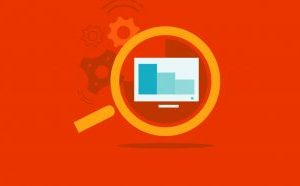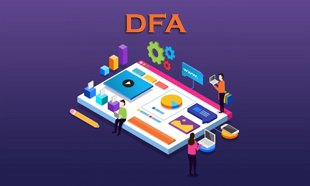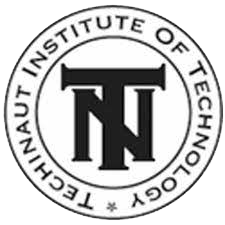DIPLOMA IN FINANCIAL APPLICATION
In today's financial landscape, proficiency in financial applications is crucial for individuals pursuing careers in accounting, finance, and business administration. "KS Computer Institute," a franchise of "Techinaut Institute of Technology" located in VPO Dorangla, Gurdaspur, Punjab, offers a six-month Diploma in Financial Application (DFA) course. This program is designed to equip students with the skills and knowledge necessary to utilize financial software effectively for various financial management tasks. This article provides a comprehensive overview of the course curriculum, covering topics ranging from basic computer fundamentals to advanced financial applications and accounting principles.
THE OBJECTIVE OF THE COURSE:
The primary objective of the Diploma in Financial Application (DFA) course at KS Computer Institute is to empower students with practical skills and theoretical knowledge in financial software applications and accounting principles. By the end of the course, students will be able to:
- Understand the fundamental concepts of computer operation and financial applications.
- Master the use of popular financial software such as Tally for accounting and financial management tasks.
- Perform various financial management tasks, including ledger, voucher entry, budgeting, and taxation.
- Develop proficiency in financial reporting, analysis, and decision-making.
- Prepare for entry-level positions requiring financial application skills in accounting firms, financial institutions, and businesses.
COURSE OVERVIEW:
SECTION 1: BASIC OF COMPUTER
This section provides students with a foundation in computer fundamentals, which is essential for understanding financial applications.
Computer Fundamentals:
Students learn about the essential components of a computer system, including hardware (CPU, memory, storage) and software (operating systems, applications). They understand computer architecture, input/output devices, and peripheral devices.
SECTION 2: COMPUTER APPRECIATION
In this section, students develop an appreciation for the role of computers in financial management and decision-making.
Understanding Computers in Finance:
Students explore the role of computers in financial management, including automation of accounting processes, data analysis, and financial reporting. They learn about the benefits and limitations of using computers in finance and the importance of data accuracy and security.
SECTION 3: WORD PROCESSING
This section covers using word processing software for creating and formatting financial documents.
Introduction to Word Processing:
Students receive an introduction to word processing software such as Microsoft Word or Google Docs. They learn about document creation, text formatting, paragraph styles, and page layout. Practical exercises help students apply word processing skills to create financial reports, memos, and correspondence.
SECTION 4: SPREADSHEET PACKAGE
In this section, students learn to use spreadsheet software for financial analysis and data management.
Introduction to Spreadsheets:
Students learn to use spreadsheet software such as Microsoft Excel or Google Sheets. They explore spreadsheet terminology, cell referencing, formulae, and functions. They also learn to create financial models, perform calculations, and analyze data using spreadsheets.
SECTION 5: PRESENTATION PACKAGE
Students learn to create and deliver financial presentations using presentation software in this section.
Introduction to Presentations:
Students receive training in presentation software such as Microsoft PowerPoint or Google Slides. They learn about slide creation, layout design, text formatting, and multimedia integration. They also learn techniques for delivering engaging and professional financial presentations.
SECTION 6: INTRODUCTION TO THE INTERNET
This section provides an overview of the Internet and its uses for financial research and communication.
Understanding the Internet:
Students learn about the Internet and its role in financial research, information retrieval, and communication. They explore online resources such as financial websites, databases, and research portals. They also learn about internet safety and security considerations in financial transactions.
SECTION 7: EMAIL
In this section, students learn to use email for financial communication purposes.
Email Basics:
Students learn about email concepts such as addresses, mailboxes, messages, and attachments. They explore email etiquette, composing and sending financial messages, managing email folders, and organizing contacts. They also learn about email security and privacy considerations in financial communication.
SECTION 8: INTRODUCTION TO TALLY
This section introduces students to Tally, a popular accounting software for financial management and accounting tasks.
Introduction to Tally:
Students learn about the features and functionalities of Tally software, including ledger management, voucher entry, and financial reporting. They explore the Tally user interface, menu options, and navigation tools. They also learn about data entry conventions and accounting principles.
SECTION 9: ADMINISTRATION IN TALLY
In this section, students learn to administer Tally software and manage user accounts and permissions.
Tally Administration:
Students learn to set up and configure Tally software for organizational use. They explore user account management, security settings, and data backup and restore procedures. They also learn about Tally licensing and software updates.
SECTION 10: MANAGING GROUP LEDGERS AND VOUCHERS
This section covers the management of groups, ledgers, and vouchers in Tally software.
Group and Ledger Management:
Students learn to create and manage groups and ledgers in Tally to organize financial transactions. They explore ledger types, classification, and hierarchy. They also learn about voucher types, creation, and entry in Tally.
SECTION 11: COST CENTRES AND COST CATEGORIES
In this section, students learn to manage cost centres and categories in Tally for cost accounting purposes.
Cost Centre Management:
Students learn to create and manage cost centres in Tally to track and allocate expenses. They explore cost centre classification, allocation methods, and reporting and analyze cost centre performance and profitability.
SECTION 12: INTRODUCTION TO BUDGETS
This section introduces students to concepts of budgeting and techniques in Tally for financial planning and control.
Introduction to Budgeting:
Students learn about budgeting fundamentals, including budget types, preparation, and monitoring. They explore budgeting techniques such as incremental budgeting, zero-based budgeting, and activity-based budgeting. They also learn to create and manage budgets using Tally software.
SECTION 13: INTRODUCTION TO VOUCHER
In this section, students learn about different types of vouchers used in Tally for recording financial transactions.
Introduction to Vouchers:
Students learn about voucher concepts such as sales vouchers, purchase vouchers, payment vouchers, receipt vouchers, and journal vouchers. They explore voucher entry conventions and accounting principles for each type in Tally.
SECTION 14: CURRENCIES (MULTIPLE CURRENCIES AND FOREIGN EXCHANGE)
This section covers the management of multiple currencies and foreign exchange transactions in Tally software.
Multiple Currencies:
Students learn to configure and manage multiple currencies in Tally to handle international transactions. They explore currency conversion rates, exchange gain/loss calculations, and forex accounting principles. They also learn to record and reconcile foreign exchange transactions in Tally.
SECTION 15: INVENTORY INFORMATION
This section covers inventory management concepts and techniques in Tally for tracking and managing stock items.
Inventory Management:
Students learn to create and manage stock items, units of measurement, and stock groups in Tally for inventory tracking. They also explore inventory valuation methods, stock movement analysis, and inventory reports and record stock transactions such as purchases, sales, and transfers in Tally.
SECTION 16: VOUCHER ENTRY
In this section, students learn to enter various vouchers in Tally to record financial transactions.
Voucher Entry:
Students receive hands-on training in voucher entry techniques for recording sales, purchases, payments, receipts, and journal entries in Tally. They learn to enter voucher details such as party accounts, transaction dates, amounts, and narration. They also learn to verify and post vouchers in Tally.
SECTION 17: DISPLAYING INFORMATION FROM TALLY
This section covers retrieving and displaying financial information from Tally for reporting and analysis purposes.
Displaying Information:
Students learn to generate and customize financial reports in Tally, such as balance sheets, profit and loss statements, trial balances, and cash flow statements. They explore report customization options, filters, and grouping features. They also learn to export reports to different formats for further analysis and presentation.
SECTION 18: INTRODUCTION TO TAXATION
This section introduces students to taxation concepts and principles in Tally for managing tax compliance.
Introduction to Taxation:
Students learn about different types of taxes, such as income tax, goods and services tax (GST), and value-added tax (VAT). They explore tax accounting principles, calculation methods, and reporting requirements in Tally and record and reconcile tax transactions.
SECTION 19: INTRODUCTION TO PAYROLL
In this section, students learn about payroll management concepts and techniques for processing employee salaries and wages in Tally.
Introduction to Payroll:
Students learn about payroll processing steps such as employee setup, attendance recording, salary calculation, and statutory deductions. They also explore payroll accounting principles, salary structures, and payroll reports in Tally and learn to generate payslips, salary registers, and payroll summaries in Tally.
CONCLUSION:
The Diploma in Financial Application (DFA) course at KS Computer Institute offers a comprehensive curriculum to equip students with practical skills and theoretical knowledge in financial applications and accounting principles. The course prepares students for entry-level positions requiring financial application skills in accounting firms, financial institutions, and businesses by covering topics ranging from basic computer fundamentals to advanced financial applications and taxation principles. Graduates emerge with the ability to utilize financial software effectively, manage financial data and transactions, and make informed financial decisions. With these skills, students are well-prepared to pursue further education or enter the workforce confidently.
 COMPUTER TYPING NICE
1 × ₹4,000.00
COMPUTER TYPING NICE
1 × ₹4,000.00  POST GRADUATE DIPLOMA IN COMPUTER APPLICATION (AGOE)
1 × ₹22,000.00
POST GRADUATE DIPLOMA IN COMPUTER APPLICATION (AGOE)
1 × ₹22,000.00  BASIC OF COMPUTER COURSE GCEC
1 × ₹13,000.00
BASIC OF COMPUTER COURSE GCEC
1 × ₹13,000.00 

